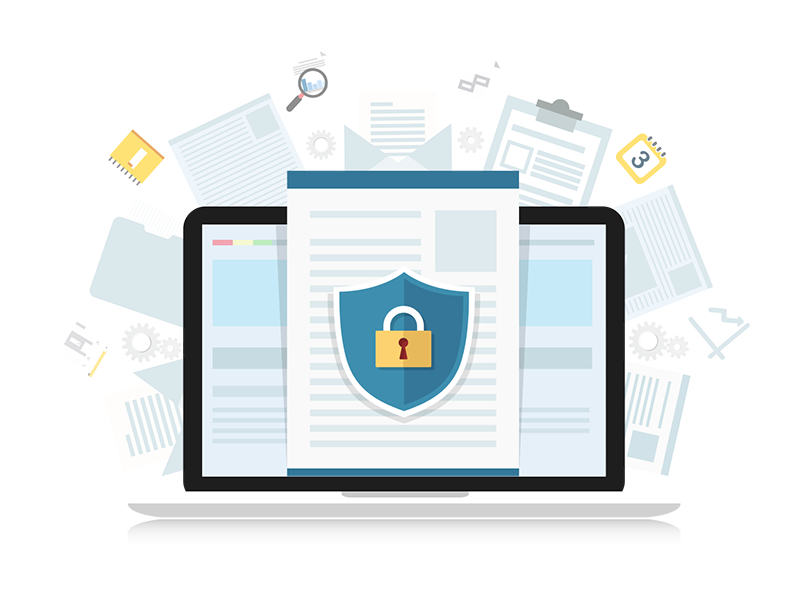Change Management in Cyber Security
 Cyber Security Will Change Companies
Cyber Security Will Change Companies
IT change management is a structured process for evaluating proposed IT system or service changes. This procedure is carried out prior to implementing the requested change on an organization’s network, reducing or eliminating network outages.
At a recent security and risk management summit, Gartner shared their views of how cyber security will change companies. While Gartner’s predictions focus on larger enterprise, several of their observations will likely hold true for small and midsize businesses (SMBs) when it comes to change management in cyber security processes.
Here are some observations and our view of how they will impact small and midsize businesses.
Impacts of Cyber Security Change Management
Through 2023, government regulations requiring organizations to provide consumer privacy rights will cover 5 billion citizens and more than 70% of global GDP.
Privacy regulations will continue to expand as more nations pass legislation establishing privacy requirements. Within the US, we expect more states to follow California, New York, and Massachusetts with varying levels of regulations. Along with the regulations come the potential for fines and increase civil litigation, making it vital to pursue cyber security change management. In many of the statues, the protection is afforded the customer based on the customer’s location, not the location of the business.
For SMBs, establishing and maintaining a sound change management cyber security footprint is essential. Beyond the cloud infrastructure technology tools, businesses need to educate employees and have the policies and procedures in place. These policies and procedures should define expectations for employees and for how the business will respond to an incident.
By 2025, 80% of enterprises will adopt a strategy to unify web, cloud services and private application access from a single vendor’s SSE (Security service edge) platform.
Protecting access to systems is more challenging as the proliferation of usernames and passwords continue. As the human element can be the greatest security challenge, Identity and Access Management (IAM) solutions will become the norm.
For SMBs, Single Sign-On (SSO), centralized identity/password vaults, and other tools are available and are, generally affordable. Many SMBs current hesitate given the incremental cost per user per month. As the cost and risk of missing becomes greater, we expect SMBs will see value of Identity and Access Management solutions. These solutions will become the norm within a cyber security strategy, not an add-on.
By 2025, 60% of organizations will use cybersecurity risk as a primary determinant in conducting third-party transactions and business engagements.
With increased concern and scrutiny from customers, consumers, and regulators, businesses are under increasing pressure to monitor and protect against third-party cyber security risks. This trend will impact SMBs in two ways.
- Given the prevalent use of business email addresses as identities for third party applications and services, SMBs will monitor for reported breaches. Third party breaches give cyber criminals an attack vector.
- Larger enterprises will see businesses in their supply chains as potential security risks. They will increasing include cyber security requirement in vendor authorization process and in contracts.
SMBs need to be ready to meet the security and risk management demands — people, process, and technology — of their customers.
By 2025, 70% of CEOs will mandate a culture of organizational resilience to survive coinciding threats from cybercrime, severe weather events, civil unrest and political instabilities.
As businesses adapted to the COVID-19 pandemic, the inability of most businesses to respond to large scale disruptions exposed flaws in traditional business continuity planning. The pandemic put a spotlight on the need for business resiliency and continuity plans for businesses that had not yet considered continuity to be a priority. The level of planning to address the threats from cybercrime will need to be the same as the planning for other disasters and business disruptions.
For SMBs, leveraging cloud solutions will remain the most cost-effective business continuity option. Moving systems and applications into cloud services increases security, adds redundancy, provides geographic diversity, and provides better remote access than on-premise systems. SMBs are at greatest risk from local or regional issues. Managed cloud services … even if only a “lift and shift” of existing servers and applications … will be accepted as a cost-effective way to improve cyber security processes, security and resiliency.
Final Thoughts on Change Management in Cyber Security
We expect small and midsize businesses will need to expand and change their cyber security footprint and processes. They will need to improve resiliency. Appropriate solutions such as cyber insurance and breach response are available and are affordable. Businesses can meet their security, resiliency, continuity, and operational needs effectively and affordably. The inherit advantages of cloud services and solutions make this possible.
To evaluate your requirements and readiness for better security and resilience against cyber attacks and other business disruptions, contact us for a consultation, or book some time with a Cloud Advisor. The consultation is free and without obligation.


